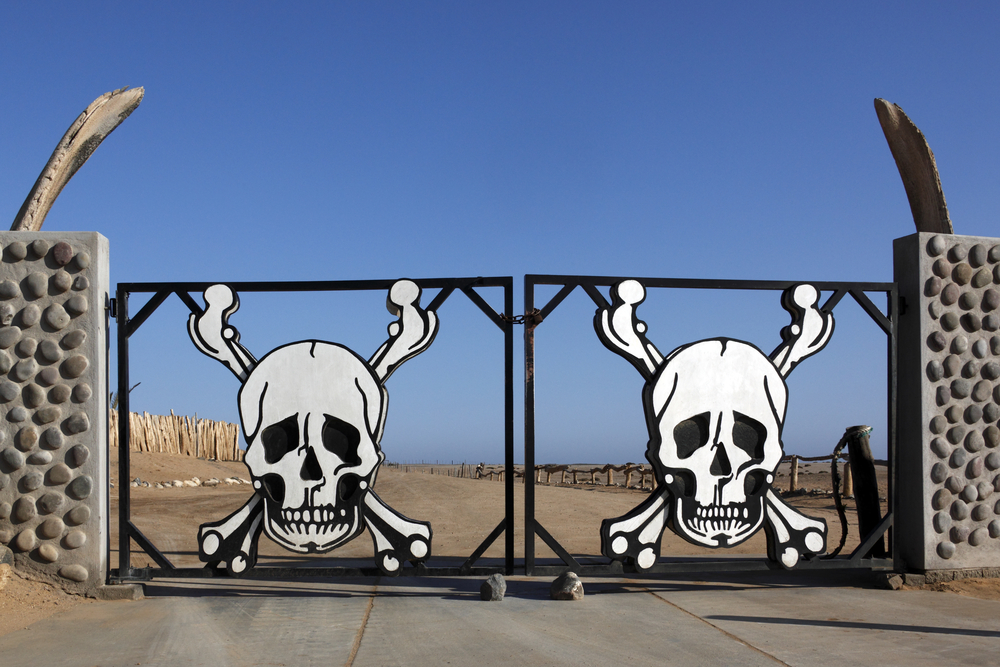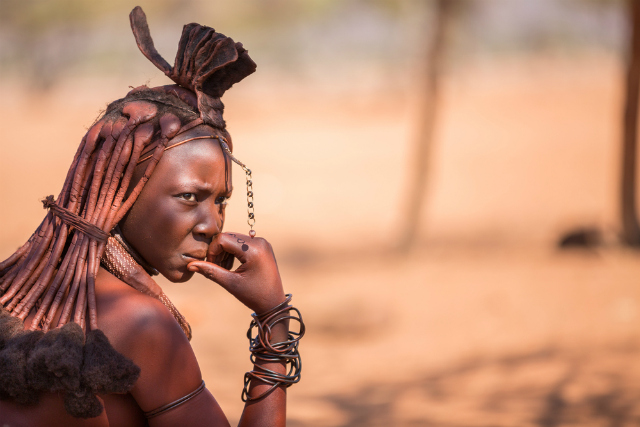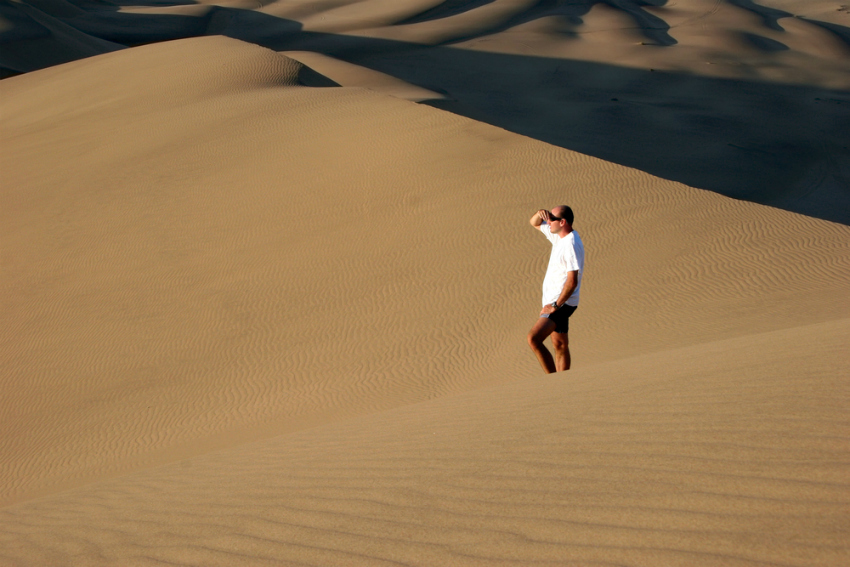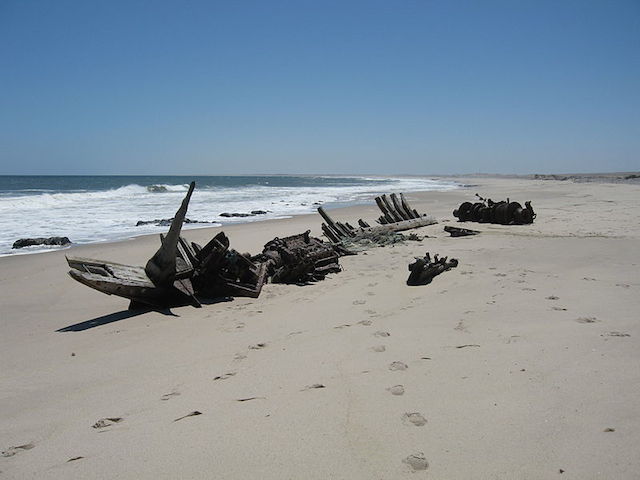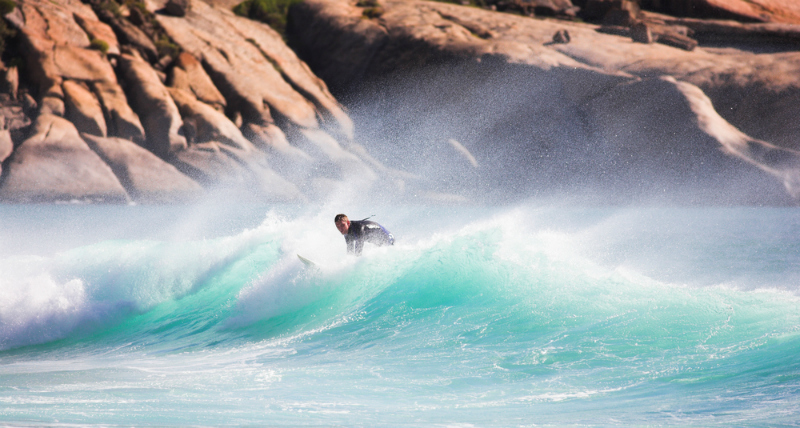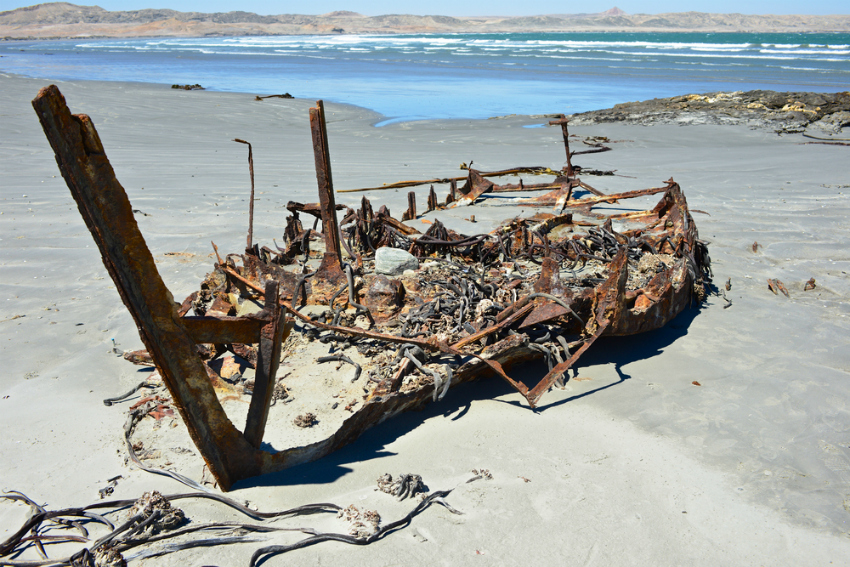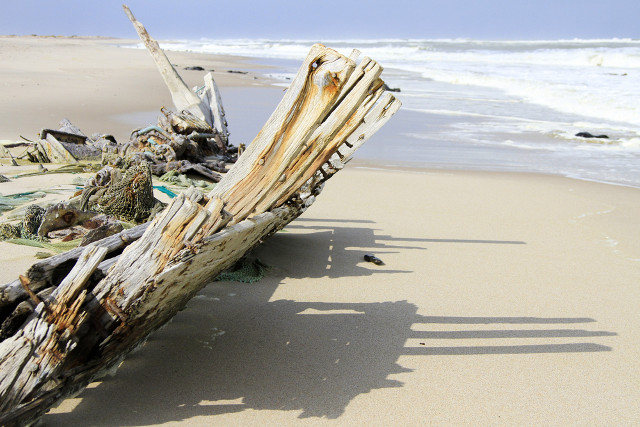The northern half of Namibia’s 976-mile coastline is known colloquially as the “Skeleton Coast,” due to the thousands of shipwrecks and whale carcasses that litter its shores. Though this massively beautiful and vast stretch of land is quite desolate and barren, it is also full of stories, surprises and hidden treasures.
Sources: cnn.com, telegraph.co.uk, dailybeast.com, en.wikipedia.org, southernafricatravel.com
This article originally appeared on AFKInsider.com.
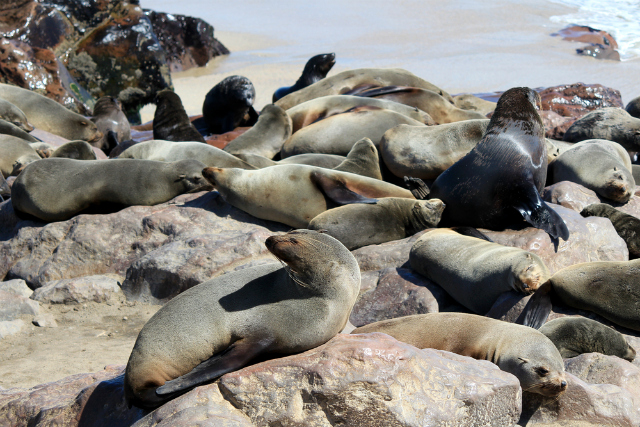
Seals at Cape Cross Reserve, Namibia (Shutterstock)
1. Most of it is national park land
The Skeleton Coast National Park covers nearly 310 miles of coastline, from the Angola border south to the Swakop River near Swakopmund. This 6,500 square mile park, which is possibly the longest, skinniest and most inhospitable one in Africa, features clay castles in the Hoarusib region, salt pans near Agate Mountain,and a large seal colony at Cape Cross.
2. Access is limited
Anyone with a 4WD vehicle can visit the southern part of the park, but drivers are only allowed to go as far as the Ugab River Gate (196km from Swakopmund). Just 800 visitors per year are allowed to visit the northern section. Access is strictly controlled, and guided excursions are the only way to explore. Two safari companies operate fly-in safaris, which cost around US$6000 for four days (not including flights into Windhoek).
3. The Himba people live there
The Skeleton Coast is far from uninhabited — in fact, the Himba people, population 50,000 — live both in the northern part of Namibia, and across the border in Angola. To protect from the blistering sun, they apply an ocher-and-butter mix that gives their skin its characteristic reddish hue.
4. The dunes roar
This is the only place on Earth where a lucky, well-timed visitor can hear the roar of the sand dunes. Air trapped between billions of grains of sand creates a low rumble that has many tourists looking up thinking there’s a jetliner passing above.
5. It’s an animal graveyard
The harsh climate and lack of water can make it difficult to survive on the Skeleton Coast, which is why death is found everywhere. The sand is littered with life’s remnants: elephant rib cages mixed with turtle shells, topped with whale vertebrae and seal skulls. The Portuguese called the coast “The Gates of Hell,” while the indigenous Khoisan bushmen describe it as “The Land God Made in Anger.”
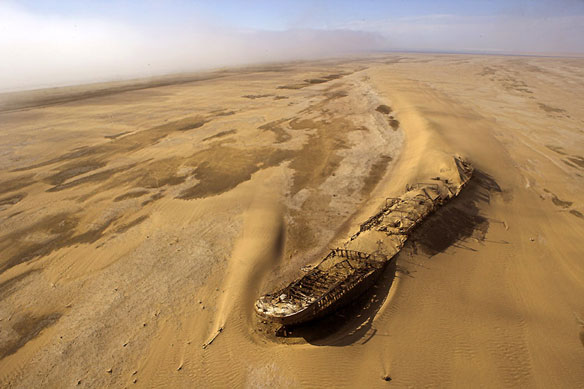
The wreck of the Edouard Bohlen, Namibia (Courtesy of Coastalcare.org)
6. It’s got famous shipwrecks
The Skeleton Coast is not only a final resting place for animals, it also keeps trophies of the ghostly remains of ships it has ruined. One of the most prominent and haunting examples is the Dunedin Star. In 1942, the 530-foot long British liner crashed on the shore — some blame a reef, others say it was a German U-boat. The rescue effort took 26 days because attempt after attempt failed amid the violent surf. Two crewmen attempting a rescue mission were drowned in the process. Its enormous, rusty corpse still remains.
7. Many have been lost and never found
Untold numbers of sailors have been marooned on the shores of the Skeleton Coast, despite desperate attempts at survival. In the 1940s, a dozen human skeletons were found, headless, lined up in a row. A slate was found nearby on which was scrawled: “I am proceeding to a river 60 miles north, and should anyone find this and follow me, God will help him.” The skeletons were the remains of sailors from a ship that had wrecked 80 years earlier, in 1860.
8. There’s a massive seal colony
Up to 250,000 Cape fur seals gather at At Cape Cross Seal Reserve at any given time. You can see them roaring, lazing in the sun, or fighting and mating via a 200-meter-long platform at the visitor center. The best times to go are mid-October, when males fight for breeding rights, and in late November/early December, when thousands of pups are born within a four-week period.
9. The surfing is great
It’s incredibly cold, difficult to get to, and full of sharks, but that doesn’t stop determined surfers from hanging ten in the waters off Namibia’s coast. The Benguela current from the south produces some of the strongest surf and longest barrels in the world. Most of the prime surf spots are south of Swakopmund (around Luderitz and Walvis Bay), but intrepid types can head up to Skeleton Coast hotspots such as Cape Cross and Ovahimba Point. Plenty of other point breaks are known mainly by word of mouth.
10. Wild animals abound
Life holds its own in the Skeleton Coast. For example, Skeleton Coast National Park is home to black-backed jackals, hyenas, lions, giraffes, zebras, ostriches, rhinos, and elephants — all adapted to the elements. Sometimes these animals can even be found on beaches, so beware!
11. It’s got a mix of wildlife
The Skeleton Coast is one of the few places on Earth where elephants, black rhinos, giraffes and lions are found together in a desert environment. The “desert elephants”, for example, are known to travel between feeding-grounds and waterholes as much as 70km (45 miles) apart. These large animals have all managed to adapt to the desert surroundings, but perhaps not quite so successfully as the Namaqua chameleon, who spend their lives waiting for the fog beetles to come out during the sea fog.
12. Your fears are well-founded
“Death would be preferable to banishment to such a country.” That is how Swedish explorer Charles John Andersson supposedly described the Skeleton Coast when he first saw it in 1859. It ranks among the most feared and scary places on Earth. Many shipping companies refuse to take boats near the coast, due to the terrible conditions and grave risk of shipwreck. Your only way in is by 4×4 or to fly in.
13. There’s all manner of wrecks
It isn’t just shipwrecks that litter the Skeleton Coast. Some unfortunate aircraft have mis-judged the conditions here as well, and their pilots have joined those whose lives have been claimed by this notorious stretch of coast.
14. The sand is ever-shifting
The desert landscape is an ever-changing one, but here the dunes seem to move more quickly than other deserts. They shift at a speed of up to 50 feet per year, covering some of the skeletons, while revealing others.
15. The fog is spooky
The Skeleton Coast is known for its atmospheric grey coastal fog, which makes for spine-tingling photographs. The fog is a vital part of the ecosystem in this dry landscape, and provides enough moisture for the lichens and other desert flora to survive. It’s also the reason so many ships and planes have wrecked there.
Related content on AFKTravel:
Photo Essay: Namibian Shipwrecks
Where To Go Off-Roading In Namibia
Otherworldly Escapes: Namibia’s Best Remote Safari Camps
Want to discover the finer side of Africa? Sign up for our weekly newsletter.
